 “I don’t like the word vintage,” says Murat Kupcu of Double Knot rugs. “These are old. Some are old enough to be called antique.” And they’re as authentic as can be: Most were made for use in the maker’s own home. Kupcu had been working in the travel business in Istanbul, but collecting tribal rugs as a hobby, when he met his wife, and American, in 1998, and they married and moved to the U.S. “I felt like I should have my own business rather than working in an office. It just made sense, even though I knew nothing about selling rugs and had no experience with retail in New York City.” Double Knot’s rugs are from Turkey, Iran, Azerbaijan, Armenia, Georgia, Central Asia, Morocco—countries with the deeper and more sophisticated weaving cultures, from simple rugs to masterpieces in museums. “There’s a question right now about how businesses on Etsy can grow while still making their wares by hand,” says Kupcu. “In an article about it, a professor was quoted as saying, ‘If you bought the yarn at a store, then the item you’re making with it isn’t truly handmade.’ In most cases, these rugs are truly handmade, from sheep to weaver. They’re not for everybody. But if your eyes are open, this is interesting stuff.”
“I don’t like the word vintage,” says Murat Kupcu of Double Knot rugs. “These are old. Some are old enough to be called antique.” And they’re as authentic as can be: Most were made for use in the maker’s own home. Kupcu had been working in the travel business in Istanbul, but collecting tribal rugs as a hobby, when he met his wife, and American, in 1998, and they married and moved to the U.S. “I felt like I should have my own business rather than working in an office. It just made sense, even though I knew nothing about selling rugs and had no experience with retail in New York City.” Double Knot’s rugs are from Turkey, Iran, Azerbaijan, Armenia, Georgia, Central Asia, Morocco—countries with the deeper and more sophisticated weaving cultures, from simple rugs to masterpieces in museums. “There’s a question right now about how businesses on Etsy can grow while still making their wares by hand,” says Kupcu. “In an article about it, a professor was quoted as saying, ‘If you bought the yarn at a store, then the item you’re making with it isn’t truly handmade.’ In most cases, these rugs are truly handmade, from sheep to weaver. They’re not for everybody. But if your eyes are open, this is interesting stuff.”
Is there a difference between a rug and a carpet?
I follow what Sotheby’s and Christie’s do, which is use “carpet” for bigger ones and “rugs” for smaller ones. A lot of people avoid “carpet” because it calls to mind machine-made wall-to-wall carpeting. In Turkey, tribal carpets are used for everything; many shaggy, thick rugs are beds, some were hung on the wall. This one hanging behind me was a bed for an entire family in Morocco. It’s 6’ by 15’—giant by tribal standards. And they’re not standard sizes you see in commercially manufactured rugs. Tribal sizes tend to be elongated. It can take imagination to make them work.
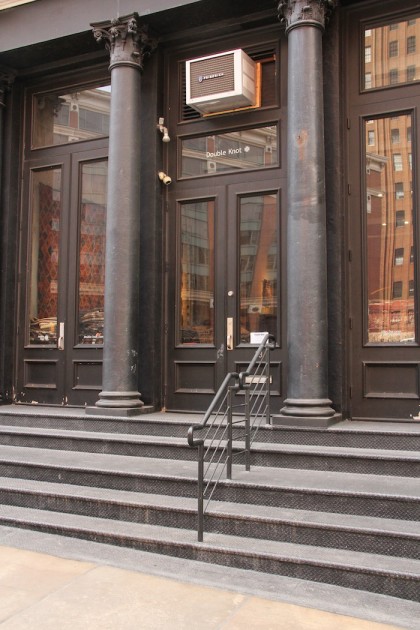 When did you open this store? Why here?
When did you open this store? Why here?
In 2002, a friend of mine and his wife had just opened a bakery on Bleecker. I met my friend there for coffee, and since he had recently been through the hunt for a space, I asked his advice. “What about Tribeca?” he said. I knew nothing about Tribeca. I walked down right afterward, and I saw a “for rent by owner” sign on this store. I did look elsewhere, but this one was the nicest—and the cheapest. The doors opened at the beginning of 2003.
How has your business changed?
Before the financial crisis, we attracted some local people—not a ton, because we’re kind of hidden here. During the crisis, I signed onto 1stdibs, which was just becoming more visible. Those days, even designers were like, “What’s that?” Now it’s part of the shift in shopping habits. People are looking online rather than just walking around. I’m very happy with some aspects of that. When you’re working with designers, they already know what they want. Instead of us flipping rugs, they choose online, and I can suggest similar ones. If someone walks in with no plans, no idea, I tell them politely that 80 percent of our inventory is online. You can browse pictures and prices and come back. Most people are very happy about that.
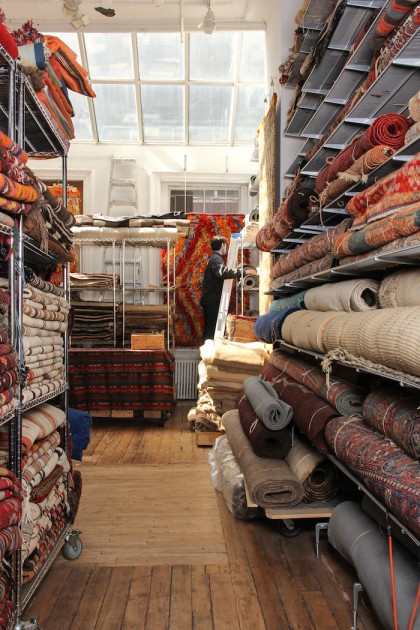 What’s the most satisfying part of what you do?
What’s the most satisfying part of what you do?
It’s a hobby turned into a business. It’s something I love. As a young collector out of college, with a small budget, my interest was very narrow. Now I can temporarily own many rugs. And make a living from it! And there aren’t many people who sell authentic tribal pieces. Typically people involved in this are of an earlier generation. A store open to the public showing this stuff is pretty unique.
Where do you source your carpets from?
I still bring a lot of stuff from Turkey, a lot from Morocco. But with long-term relationships and digital photography, I don’t have to go as often. Or I can go and look at what people have chosen for me to see. Also, I buy from dealer friends in the U.S. and Europe. The older, more special pieces are getting harder and harder to find in the field.
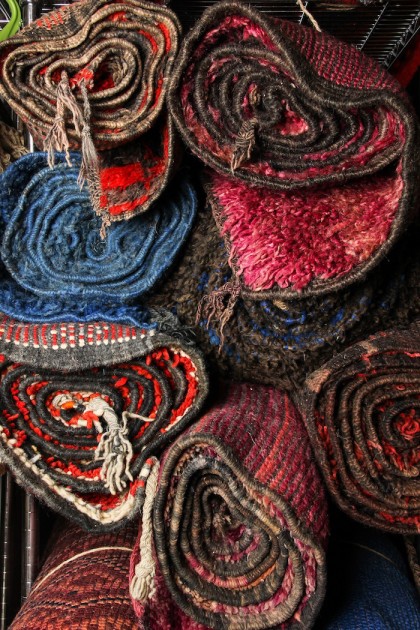 Your very favorite item (right now, anyway)?
Your very favorite item (right now, anyway)?
I started with tribal flatweaves from Turkey but I can’t even say I prefer them anymore. I’ve come to appreciate so much more. When I just acquire something, maybe it’s my favorite for a little while.
Most expensive item?
A giant antique Persian carpet for $75,000. It’s 18 feet by 27 feet, and a beautiful antique—from the 19th century. And there are a few others in the $50,000 range. But most are $1,000 to $5,000 for what I call a room-size carpet.
Least expensive?
I have really small rugs—like tribal bags, cushions, these kind of interesting items—that can be used as a rug or pillow, for $200 to $300. There are definitely a lot of things under $1,000, such as beautiful 4 foot by 6 foot wall hangings.
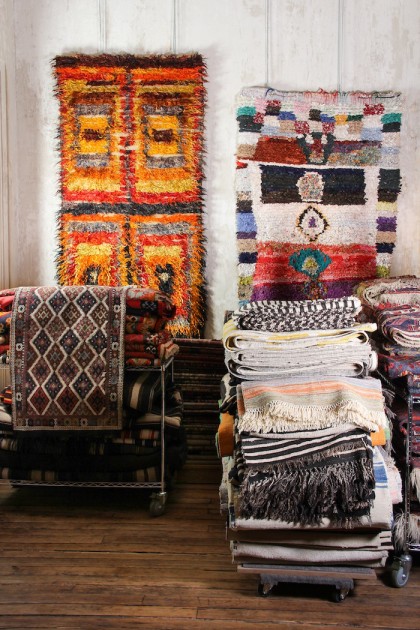 Most popular?
Most popular?
I sell a lot of “simple” rugs. Many were originally used as utilitarian, everyday floor coverings with fancy rugs put on top, or used outdoors to dry fruits and grains. Our aesthetic today is simple. People can be afraid of color or unsure of how to use patterns.
Tell me a good customer story.
Early on when I opened the store, when I was very new and had no experience, a tall woman walked in and asked for very big carpets. She looked very much like my former boss, so that threw me off. Also, we were looking at carpets that cost $20,000 to $30,000—I had never even talked about prices like that! I showed her pictures of more large carpets that a colleague had, and she said she wanted to see some of the carpets, so I said I’d call her when they came in. She left her card, which I only looked at later. Sigourney Weaver! I had even asked her, “Are you sure you’re not a designer?”
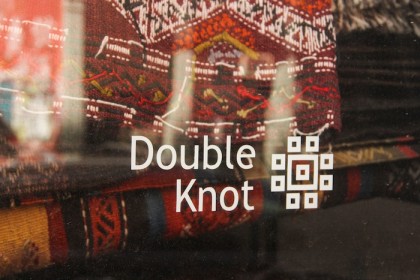 Photographs by Claudine Williams (no relation), who specializes in head shots for actors, business professionals, or anyone looking to be photographed.
Photographs by Claudine Williams (no relation), who specializes in head shots for actors, business professionals, or anyone looking to be photographed.













